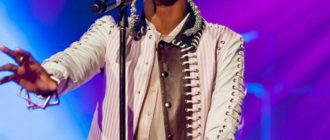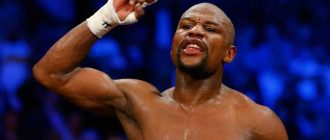Nelson Mandela was a South African anti-apartheid revolutionary, government official, and philanthropist, who served as President of South Africa from 1994 to 1999. He was the nation’s first black president and the first elected in a democratic manner. His administration concentrated on destroying the legacy of apartheid by handling regulated bigotry and encouraging racial compromise. Ideologically an African patriot and communist, he filled in as President of the African National Congress (ANC) party from 1991 to 1997.
1. His full name is Nelson Rolihlahla Mandela.
2. He was born on 18 July 1918
3. Mandela was conceived in Mvezo in Umtata, then part of South Africa’s Cape Province to the Thembu imperial family.
4. He studied law at the University of Fort Hare and the University of the Witwatersrand before functioning as a legal counselor in Johannesburg.
5. He is held in profound regard in South Africa, where he is regularly alluded to by his Xhosa clan name, Madiba, described as the “Father of the Nation” given the forename Rolihlahla, a Xhosa expression casually signifying “troublemaker” in later years he ended up noticeably known by his tribe name, Madiba
6. His patrilineal great-grandfather, Ngubengcuka, was ruler of the Thembu people in the Transkeian Territories of South Africa’s present-day Eastern Cape province. One of Ngubengcuka’s children, named Mandela, was Nelson’s granddad and the origin of his surname. Because Mandela was the king’s child by a wife of the Ixhiba group, a supposed “Left-hand house”, the relatives of his cadet branch of the royal family were morganatic, ineligible to acquire the position of authority yet perceived as genetic imperial councilors
7. Nelson Mandela’s dad, Gadla Henry Mphakanyiswa, was a local chief and councilor to the ruler; he was designated to the position in 1915, after his forerunner was blamed for defilement by an administering white judge
8. In 1926, Gadla was likewise sacked for corruption, yet Nelson was informed that his dad had lost his occupation for confronting the judge’s preposterous demands. Gadla was a polygamist with four wives, four sons and nine daughters, who lived in various towns
9. Nelson’s mother was Gadla’s third wife, Nosekeni Fanny, child of Nkedama of the Right Hand House and an individual from the Mpemvu family of the Xhosa.
10. Mandela involved in anti-colonial and African nationalist politics joining the ANC in 1943 and helping to establish its Youth League in 1944 In 1962.
11. Mandela met Evelyn Mase, a student nurse and ANC activist from Engcobo, Transkei. Entering a relationship and wedding in October 1944, they at first lived with her relatives until moving into a leased house in the township of Orlando in mid 1946.
12. Their first child, Madiba “Thembi” Thembekile, was born in February 1945; a girl, Makaziwe, was later born in 1947 however passed on of meningitis nine months after.
13. He was arrested for planning to overthrow the state and sentenced to life imprisonment in the Rivonia Trial. Mandela served 27 years in jail, at first on Robben Island, and later in Pollsmoor Prison and Victor Verster Prison.
14. Amid developing household and international pressure, and with fears of a racial civil war, President F. W. de Klerk set him free in 1990.
15. Mandela and de Klerk arranged a conclusion to politically-sanctioned racial segregation and composed the 1994 multiracial general decision in which Mandela drove the ANC to triumph and became President.
16. Internationally, he acted as a mediator in the Pan Am Flight 103 bombing trial and filled in as Secretary-General of the Non-Aligned Movement from 1998 to 1999.
17. Mandela was a controversial figure for most of his life. In spite of the fact that critics on the privilege upbraided him as a communist terrorist and those on the radical left considered him excessively excited, making it impossible to arrange and accommodate with politically-sanctioned racial segregation’s supporters, he increased global praise for his activism.
18. Widely viewed as a symbol of democracy and social equity, he got more than 250 honors including the Nobel Peace Prize and he became the subject of a clique of identity.
19. Mandela turned into a senior statesman and concentrated on fighting neediness and HIV/AIDS through the charitable Nelson Mandela Foundation.
20. In February 2011, Mandela was hospitalized with a respiratory disease, pulling in global attention before being re-conceded for a lung contamination and gallstone evacuation in December 2012.
21. After an effective medicinal procedure toward the beginning of March 2013, his lung disease repeated and he was quickly hospitalized in Pretoria. In June 2013, his lung disease exacerbated and he was readmitted to a Pretoria healing center in genuine condition. In September 2013, Mandela was released from healing facility, in spite of the fact that his condition stayed shaky.
22. After experiencing a prolonged respiratory disease, Mandela died on 5th of December 2013 at 95 years old at his home in Houghton, encompassed by his family.
23. Zuma declared his demise on Television, announcing ten days of national grieving, a commemoration service held at Johannesburg’s FNB Stadium on 10 December 2013, and 8 December as a national day of prayer and reflection.
24. Mandela’s body lay in state from 11 to 13 December at the Union Buildings in Pretoria and a state burial service took place on 15 December in Qunu. Approximately 90 delegates from several foreign states made a trip to South Africa to the commemoration event. The media was inundated with tributes and reminiscences, while pictures of and tributes to Mandela multiplied crosswise over social media.
25. His $4.1 million estate was left to his wife, other relatives, staff, and educational institutions












